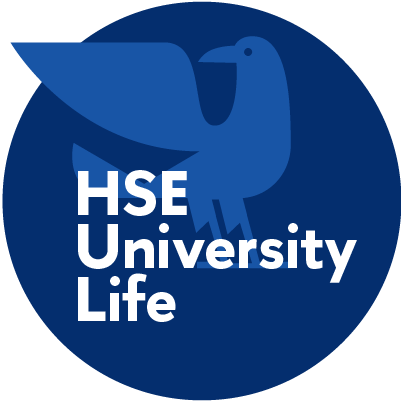- A
- A
- A
- ABC
- ABC
- ABC
- А
- А
- А
- А
- А
‘Hearing the Student’s Voices and Learning about Their Problems, Perspectives, and Attitudes’
© Daniil Prokofyev
First launched by students in 2001, the annual Student Life Survey (SLS) is now being conducted for the 20th time. It has become a source of information that helps the university make decisions related to the students. Read on to learn how different HSE departments use the survey data.
HSE University was once home to the ‘Gorod’ student association, which was founded by active sociology students with the aim of learning more about sociological issues. One of their research projects later developed into an official university project and today’s SLS, after the Centre for Institutional Research (CIR) was founded at HSE.
All students of the HSE campus in Moscow have received individual links to the survey via their HSE email. Very soon, links will also be available on the HSE App and LMS. The survey takes about 20 to 30 minutes to complete.
If needed, you can complete the SLS in several sessions. Your answers are saved as you go, and when you open the same individual link again later, you’ll be able to start from the same place where you left off.
Students of the HSE campuses in St. Petersburg, Nizhny Novgorod, and Perm will receive links to the survey by November 30.
Director for Internal Monitoring and Student Academic Developmentстудентов
It’s hard to believe, but our constantly changing university still has some things that are permanent. Funnily enough, one of these things is the annual student life survey, a project that was invented and launched by students as long ago as in 2001. Student projects are usually considered to be ephemeral, but here, we clearly see an exception to the rule. The Student life survey, abbreviated as SLS, has become one of HSE University’s important feedback tools. I believe this is the result of two things: the energy of those who organized this survey in various years, and the willingness of the administration to hear the students’ voices and learn about their problems, perspectives, and attitudes.
It is not an exaggeration to say that no discussion at HSE University about students takes place without referring to the data from the survey or special studies. Most of SLS data, such as the evaluation of various conditions of life and academics at the University, extracurricular activities, students’ other professional activities, and other topics, have become an important part of HSE’s self-presentation, are part of Rector’s annual report on university activities, and are published on the HSE website in the ‘About’ section.

Rector’s Assistant
A couple of years ago a batch of questions about media consumption was added to SLS. Students share how they learn about HSE news, who they listen to, and how they evaluate various university-related resources. This data has become a foundation for creating the Internal Communications Unit, and I believe this information is extremely helpful for the annual ‘situation check’ and analyzing effects.
For example, this data gives clear evidence that the student community (despite the skeptical attitude of older colleagues) lives mostly in VK: there, they communicate, learn the news, and create groups. That’s why we decided to develop Student Life’s presence on VK, while Telegram has become the intersection for student, staff, and graduate audiences. SLS also demonstrates the importance of university mailouts for students, which might seem unlikely; they have helped me and my colleagues when we advocated the need to bring them in order and be more careful about students’ emails.
As a lecturer at the School of Integrated Communications, I often recommend my students to look to the raw data of SLS (which can be provided by the CIR upon students’ request) if they are researching university communications, since this data allows the testing of hypotheses regarding correlation of media consumption, loyalty, academic involvement, etc.

Director of the Student Development Office
The Student Life Survey is a key student feedback tool. The survey’s evaluation of student services determines the directions we take in our work. For example, the transformation of the HSE’s psychological counselling service, was carried out based on students’ suggestions, as well as the development of student initiative support and other tools for creative realization. I believe that the survey will generate some important ideas for university improvement this year as well.
HSE Vice Rector
2020 has not been the easiest year for our students who live in the dorms. The COVID-19 pandemic made us to take a new look at prevention measures: this spring, we introduced some major limitations on guest visits to the dorms; the transition to distance learning unveiled some deficiencies in internet operation, which we had to fix in a very short amount of time; some of the dorms were quarantined, which also didn’t foster the usual nature of student-administration relations. I believe it is extremely important to ask the students how they see and are experiencing the current situation and in order to solve our problems together.

Head of the Office for Alumni Relations and Career Development
One of the University’s priority tasks is to monitor the career trajectories of its students and graduates. The CIR surveys, and most importantly SLS, is an opportunity for us to learn about the professional achievements of our students and graduates.
These help us to understand students’ career interests – what employers and spheres they are interested in – thanks to which we can create valuable offers for them and introduce them to the best employers while they are students.
We have recently launched a career maps service – a project aimed to help students build their career trajectories. The project helps students learn about career opportunities after graduation, compare salaries, and learn in what companies and on what positions they would be able to work. In addition, the website includes assignment samples and candidate specifications, so that the students clearly see the skills and competencies they have to master in order to be competitive on the job market.
We have been able to implement this project thanks to the years-long efforts of the CIR and data collection: now, our students can have a good sense of their career opportunities.

Director of the HSE Student Council’s Executive Office, First Deputy Chair of the Student Council at the Graduate School of Businessтитель председателя студсовета Высшей школы бизнеса
Committees of the HSE Student Council, as well as Student Councils of HSE departments, try to base their decisions on SLS results in order to determine areas that are in need of improvement. For example, the Social Committee requested survey results about the quality of food at the cafeterias and the wi-fi quality, and this information was later used in the projects aimed to improve the quality of meal specials and the internet in HSE buildings. The Education Quality Committee always requests SLS results related to education in order to use this data in their projects.
The SLS results are valuable for our work, because they are representative of a lot of important issues. This year, the whole university community had to face some unexpected new challenges, to transition to mixed and distance learning. SLS will show whether this transition was successful, and that’s why it’s so important for all stakeholders of life at HSE.



